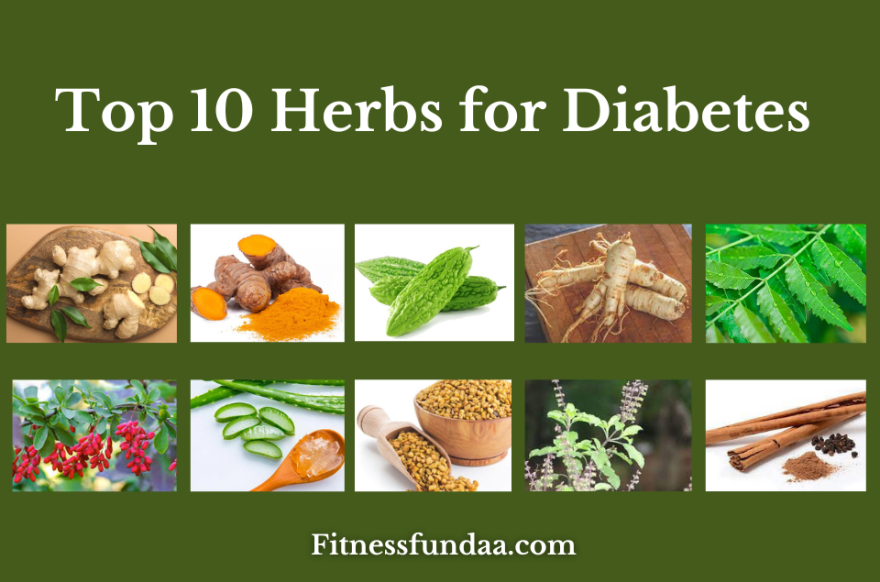Diabetes is a complex health condition that has been progressively increasing, with statistics from January 2022 indicating its widespread global impact. According to estimates by the International Diabetes Federation (IDF) in 2019, around 463 million adults (20-79 years old) globally were reported to be living with diabetes. Top 10 Herbs for Diabetes. Herbs for Diabetes.
Projections by the IDF suggested a continued rise, with expectations that the worldwide diabetic population could potentially reach 700 million by the year 2045. In this article, we will provide a brief overview of diabetes and its various types. Additionally, we will learn about the top 10 herbs for managing diabetes.
Being a complex medical condition, it manifests in two primary types—Type 1 and Type 2—each distinguished by its unique etiology.
Type 1- Diabetes stems from an autoimmune response wherein the immune system erroneously targets and dismantles insulin-producing cells within the pancreas. While genetic and environmental factors contribute, the precise cause remains partially understood.
Type 2 diabetes is a prevalent metabolic disorder that causes insulin resistance, and leads to inadequate insulin production over time. In evolving type 2 diabetes, genetic factors play a crucial role in Type 2 diabetes if it is within the family history. It is often associated with lifestyle choices, including a poor diet, lack of physical activity, and obesity.
It is quite distinct from type 1 diabetes as lifestyle plays an important role in its development. Management typically involves lifestyle modifications, medication, and sometimes insulin therapy. Prevention focuses on maintaining a healthy lifestyle, including a balanced diet, regular exercise, and weight management, to reduce the risk of onset.
Here are the Top 10 Herbs for Diabetes
Cinnamon:
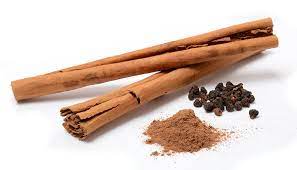
Cinnamon demonstrates insulin-mimetic properties, mimicking insulin’s actions to enhance glucose uptake by cells. It also increases insulin sensitivity which further allows cells to better absorption from glucose resulting in improved blood sugar. Cinnamon also improves glucose transport by increasing the activity of insulin receptors on cell membranes, reducing elevated blood sugar levels.
In addition, it inhibits enzymes in the digestive tract, slowing carbohydrate breakdown for more effective blood sugar regulation. Cinnamon’s rich antioxidant and anti-inflammatory properties may contribute to improved insulin sensitivity by addressing chronic inflammation linked to insulin resistance. Furthermore, it may enhance glycogen synthesis in the liver, reducing excess glucose. Research suggests cinnamon supports the health of beta cells in the pancreas, potentially enhancing insulin production.
Incorporating cinnamon into your diet adds delicious flavor and potential health benefits. Sprinkle it on morning oatmeal or cereal for a classic breakfast, blend into smoothies with fruits like bananas, and stir into coffee or tea for a delightful twist. Mix cinnamon into yogurt or cottage cheese for a healthy snack, dust on sliced fruits to enhance natural sweetness, and use in baked goods like muffins or bread. Elevate roasted vegetables with cinnamon and honey, create a spice rub for proteins, or make a delicious sauce for pancakes or desserts. Add cinnamon to rice dishes for a fragrant twist.
Fenugreek:

_image source : eatrightbasket.com
Studies suggest that fenugreek seeds may lower blood sugar levels in individuals with diabetes by enhancing insulin sensitivity and reducing fasting blood sugar. Fenugreek shows promise in managing postprandial blood sugar, contributing to overall glycemic control. It may influence insulin secretion, aiding blood sugar regulation, and the soluble fiber in fenugreek promotes stable blood sugar levels by slowing sugar absorption. With antioxidant properties, fenugreek helps reduce oxidative stress, supporting blood sugar control. Some studies hint at positive effects on lipid metabolism, potentially improving cholesterol levels—a consideration for individuals with diabetes at an increased risk of cardiovascular complications..
Including fenugreek in meals adds unique flavor and potential health benefits. Create spice blends with cumin, coriander, and turmeric for meats or vegetables. Enhance curries with fenugreek leaves, sprinkle ground fenugreek on roasted vegetables, and infuse oils for stir-fries. Use fenugreek in bread, lentil dishes, or pickles for added depth. Add fenugreek to soups or brew leaves for herbal tea. Mix fenugreek powder into yogurt dips and include it in rice pilaf or breakfast dishes for a fragrant twist..
Ginger:

_image source : foodrepublic.com
Ginger, with anti-inflammatory compounds like gingerol, may alleviate inflammation in diseases like diabetes and improve insulin sensitivity. Enhancing glucose uptake, contributes to better blood sugar control. Its dual action makes it a natural support for metabolic health, but its incorporation should be within a balanced diet, and consultation with healthcare professionals is vital, especially for those with existing health conditions.
Adding ginger to recipes not only enhances flavor but also offers potential health benefits. Grate or mince fresh ginger for stir-fries, meats, or tofu. Make soothing ginger tea with honey and lemon. Add ginger to morning smoothies with fruits like pineapple and mango. Incorporate grated ginger into homemade dressings for a versatile addition to sweet and savory dishes. These tips offer creative ways to enjoy ginger’s unique and beneficial qualities in daily meals.
Turmeric:
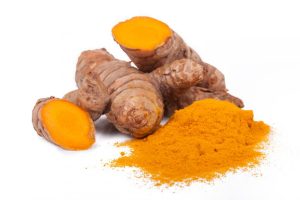
_image source : medicalnewstoday.com
Curcumin in turmeric, with strong anti-inflammatory and antioxidant properties, may benefit individuals with diabetes by mitigating chronic inflammation and combating oxidative stress. Incorporating turmeric into the diet or using curcumin supplements could offer a natural approach to enhance overall health and aid in diabetes management. Consultation with healthcare professionals is crucial, especially for those with existing health conditions
Introducing turmeric into your cooking or as a supplement adds flavor and health benefits. Enjoy it in golden milk, curries, and soups for richness. Brew turmeric tea or add a pinch to smoothies. Create vibrant dishes like turmeric-roasted vegetables and infused rice. These versatile options offer creative ways to make turmeric a part of your daily meals.
Bitter Melon:
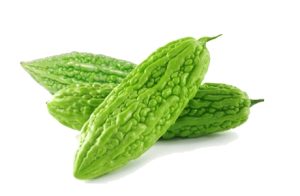
_image source: checkyourfood.com
Bitter melon, or Momordica charantia, has a history of traditional use for lowering blood sugar levels, especially in Asian and Indian systems like Ayurveda. It contains bioactive compounds like charantin and polypeptide-p, believed to mimic insulin, improving glucose uptake and potentially lowering blood sugar. Bitter melon is consumed in various forms, such as raw juice or supplements, for potential glycemic control. Consultation with healthcare professionals is advisable.
Ginseng:
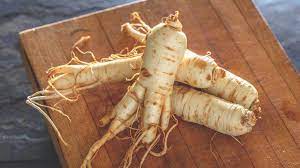
_image source: healthline.com
Studies suggest Korean red ginseng may enhance insulin sensitivity, reducing fasting and postprandial blood sugar levels. It shows promise in supporting beta cell health and has antioxidant effects, potentially improving overall metabolic health and insulin sensitivity.
While promising, further research is needed, and individuals considering ginseng for blood sugar control should consult healthcare professionals, considering potential variations in responses and interactions with medications.
Aloe Vera:
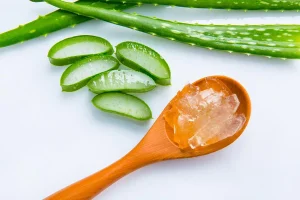
_image source: google.com
Aloe vera, known for its topical uses, is being explored for potential benefits in managing type 2 diabetes. Early-stage research suggests positive effects, including improved fasting blood sugar levels. Aloe vera may enhance insulin sensitivity, reduce inflammation associated with insulin resistance, and provide antioxidants for metabolic health. Studies also indicate its influence on liver function, contributing to better glucose regulation, and improvements in lipid profiles, essential for managing cardiovascular risk in diabetes.
Despite promising findings, caution and consultation with healthcare professionals are advised, considering potential variations in responses and medication interactions. Further research is needed to establish the efficacy and safety of aloe vera as a complementary approach to diabetes management.
Berberine:

_image source: longevity.technology
Berberine, a bioactive compound found in various plant roots, rhizomes, and bark, is noted for its potential to lower blood sugar levels and offer health benefits. Plants like Barberry, Chinese Goldthread, Tree Turmeric, Goldenseal, and Chinese Goldenseal are rich sources of berberine, each with its historical medicinal uses.
Research indicates berberine’s ability to influence cellular activities, improving insulin sensitivity and glucose uptake, making it of interest for blood sugar control. Despite its potential, consultation with healthcare professionals is advised due to potential variations in individual responses and interactions with medication.
Holy Basil (Tulsi):

_image source: wikipedia.
Holy basil, or Ocimum sanctum (Tulsi), renowned in Ayurveda, is believed to possess anti-inflammatory and antioxidant properties that may help lower blood sugar levels. Its compound eugenol reduces chronic inflammation associated with insulin resistance, enhancing insulin sensitivity. Antioxidants like flavonoids counter oxidative stress linked to insulin resistance, aiding in blood sugar control.
Holy basil may influence glucose metabolism, facilitating better utilization by cells and contributing to stable blood sugar levels. Research explores its potential to preserve beta-cell function in the pancreas, crucial for insulin production and blood sugar regulation. While ongoing research supports these benefits, consulting healthcare professionals is advisable for personalized advice and potential medication interactions.
Neem:

_image source: amazon.in
Neem, or Azadirachta indica, native to India, is traditionally used in Ayurveda with potential benefits for diabetes. Studies suggest it may regulate blood sugar, enhance insulin sensitivity, and provide antioxidants to combat oxidative stress linked to diabetes development. While promising, more research is needed for conclusive evidence. Always consult with a healthcare professional before considering neem for diabetes management.
In conclusion, diabetes is a global health concern on the rise, with an estimated 463 million adults affected in 2019, projected to reach 700 million by 2045. This article provides a concise overview of diabetes, exploring its types and introducing the top 10 herbs for diabetes management. Type 1 diabetes results from an autoimmune response, while Type 2, a prevalent metabolic disorder, involves insulin resistance and insufficient production, influenced by genetic factors and lifestyle choices.
Management focuses on lifestyle modifications, medication, and insulin therapy, with prevention emphasizing a healthy lifestyle. The featured herbs, including cinnamon, fenugreek, ginger, and turmeric, offer potential benefits such as blood sugar regulation, enhanced insulin sensitivity, and antioxidant properties.
While these herbs show promise, it’s crucial to consult healthcare professionals for personalized advice and potential interactions with medications.
Faqs
Q1: What are the top 10 herbs for managing diabetes?
A: The top 10 herbs include Cinnamon, Fenugreek, Ginger, Turmeric, Bitter Melon, Ginseng, Aloe Vera, Berberine, Holy Basil (Tulsi), and Neem. Each herb offers unique potential benefits for blood sugar control.
Q2: How does Cinnamon contribute to diabetes management?
A: Cinnamon demonstrates insulin-mimetic properties, enhances insulin sensitivity, and has antioxidant and anti-inflammatory properties. It may also support beta cell health in the pancreas.
Q3: How can these herbs be incorporated into the diet?
A: Herbs like Cinnamon can be sprinkled on oatmeal, blended into smoothies, or added to coffee. Similarly, Fenugreek, Ginger, and Turmeric can be included in various recipes to enhance flavor and offer potential health benefits.
Q4: Is there ongoing research on the effectiveness of these herbs, including Neem?
A: Yes, ongoing research explores the potential benefits of herbs like Neem in regulating blood sugar, enhancing insulin sensitivity, and providing antioxidants. However, conclusive evidence is still needed, and consultation with healthcare professionals is crucial.
Q5: Can Aloe Vera be used for managing type 2 diabetes?
A: Early research suggests positive effects of Aloe Vera on fasting blood sugar levels, insulin sensitivity, and inflammation associated with insulin resistance. Caution and consultation with healthcare professionals are advised, and further research is needed.
Q6: What precautions should be taken before considering herbs for diabetes management?
A: Always consult with healthcare professionals before incorporating herbs into your diabetes care plan, especially if you are on medication. Individual responses can vary, and potential interactions with medications need consideration.

